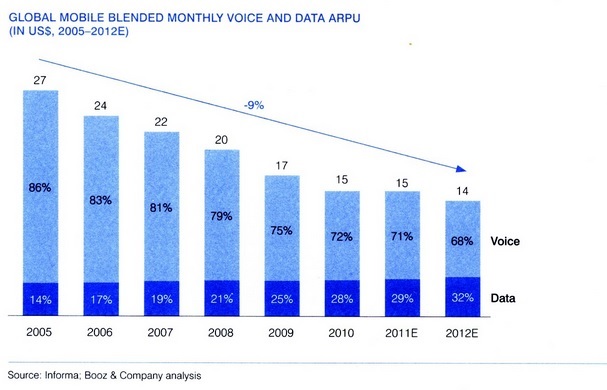Let’s paint a picture of how large players in telecommunications used to make their money 20 years ago. Large Telecommunications companies like France Telecom, Telecom Italia, Vodafone, AT&T and Deutsche Telekom among others, would secure their revenue based on a fee for a communication, according to Gilles.
I/ Gilles Négrel’s Bio

Gilles Négrel is a senior international business executive in the Information and Communications Technology market. He has 20+ years of international management experience in sales, channel and business development working with solution and service providers, in tier-1 leading companies groups such as Orange, Ericsson, Motorola, Avaya and Tellabs. Gilles has proven track record of designing and implementing growth strategies, developing new businesses, strategic alliances, leading multi-million $ operations and managing large & cross functional teams. Gilles is an Alumnus of the “Ecole Polytechnique” and the Telecom ParisTech. Gilles is married and has two children.
II/ In the past, the business model of Telecommunication companies was based on a fee for a communication
In other words every call had a cost and was be paid for by the client. Every single call came at a specific price, according to the length of the call, the location, and the nature of the call (local or long distance). Price therefore, was a function of duration and distance. Therefore, revenues of large telecommunications company were dependent on the number of calls their clients would make, as well as the duration and the distance.
III/ Today, the business model of Telecommunications companies is based on a flat fee
But today, the business model has changed. Telecommunications network providers don’t charge a fee for call. Rather it’s a flat fee that covers an indefinite number of calls: the average revenue per user has plummeted.

So, big players in the telecommunications industry have had to deal with two new developments:
- significant decrease in their revenue
- radical change in their business model, their pricing model, and revenue streams
IV/ The change in the business models of Telecommunication companies is the result of two disruptive innovations, according to Gilles
First of all, in the late 1990s, massive investments were made in network infrastructure connecting developed markets to developing markets. This massive investment had three adverse effects:
- oversupplying clients with network capacity
- turning the network infrastructure market into a commodity market
- declining prices
This occurred as the personal computer was becoming more and more widespread. Therefore, clients could choose between communicating through a PC connected to a network or using a landline phone to talk to someone else. In other words, customers had the choice between data and voice: this alone undermined the market share of voice.
Second of all, in the last 8 to 7 years, the emergence of 3G combined with the rise of smartphones has also challenged large telecommunications players in the mobile industry. The rise of 3G helped to transport data easier. But, there was still a lack of terminal: consumers needed a mobile terminal to consume data, while they were mobile. This changed with the creation smartphones enabling mobile Internet: the amount of data consumed on the mobile network has been multiplied by 10 in the last several years.
Today, data consumption is increasing significantly and consumers are starting to watch videos and do FaceTime calls with their smartphones. Therefore, the need to improve networks remains strong. This requires massive investment in network infrastructure which, is proving difficult to realize given that revenues of telecommunications players have been decreasing.
V/ Disruptive innovations are undermining the business model of Telecommunications companies
In other words, telecommunications players are seeing:
- Their business model is changing
- Their average revenue per user plummet
- Value migrated from their core business (voice) to new spaces (data and mobile internet)
How should telecommunications players deal with these changes? What should they do to capture more value on their markets? These are the questions Gilles and I brushed upon during our next conversation.
Further readings:
- For a description of how network infrastructure has changed in the 1990s, please refer to Thomas Friedman’s, The World Is Flat chapter 1 and 2
- For another discussion on how carrier business models are being undermined today, please refer to this blog
- For a discussion on innovation issues in the Telecommunications industry, please refer to Nicolas Bry’s blog here
- For other examples of how disruptive innovation may undermine business models, please refer here
- For an update on innovations in the Telecommunications industry, please refer here and here

[…] In other words every call had a cost and was be paid for by the client. Every single call came at a specific price, according to the length of the call, the …read more […]
[…] Pour une autre analyse de l’effet des innovations de rupture sur le marché des télécoms, veuillez-vous référer à ce billet […]
Thank you for the valuable information. good article about telecommunication 🙂